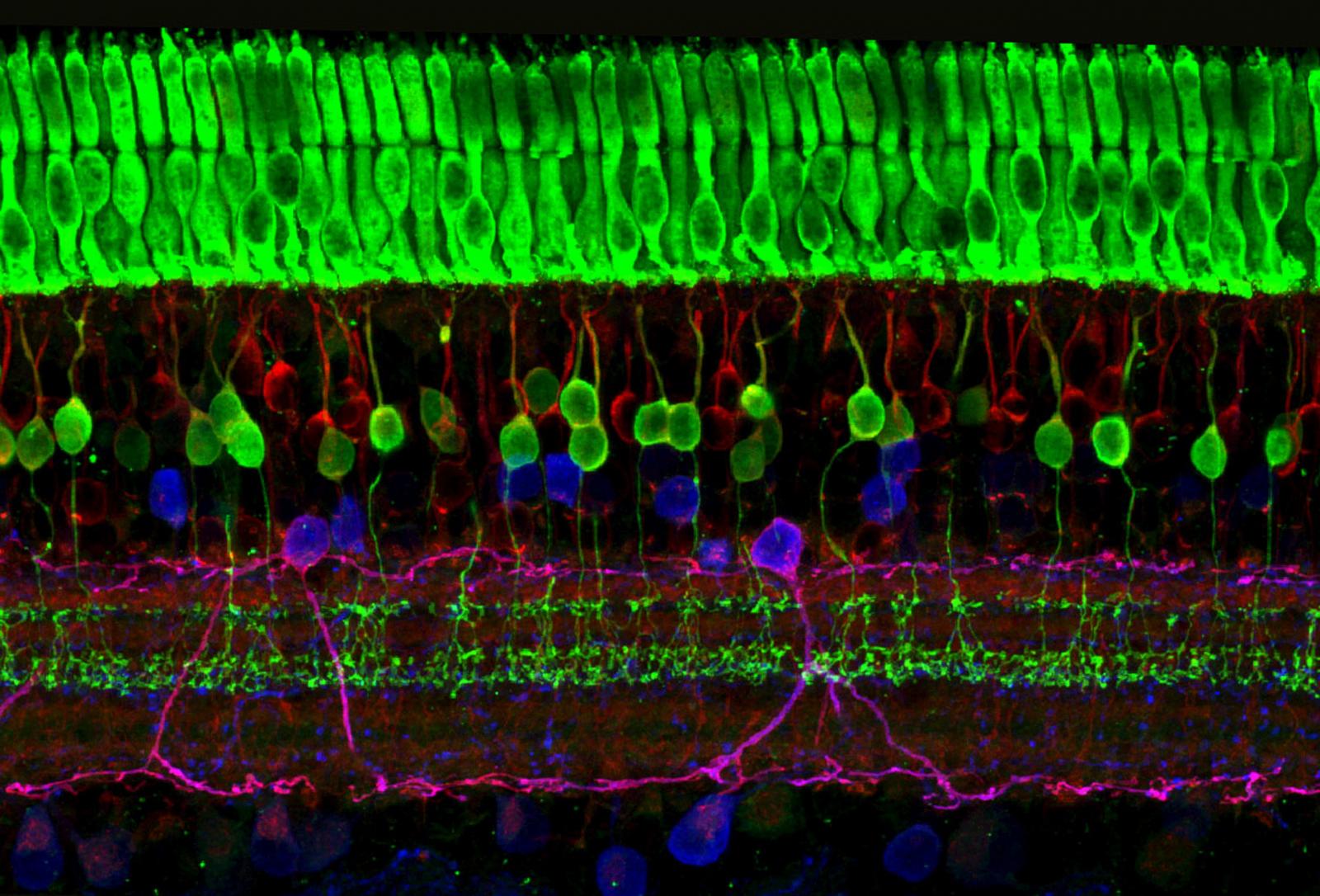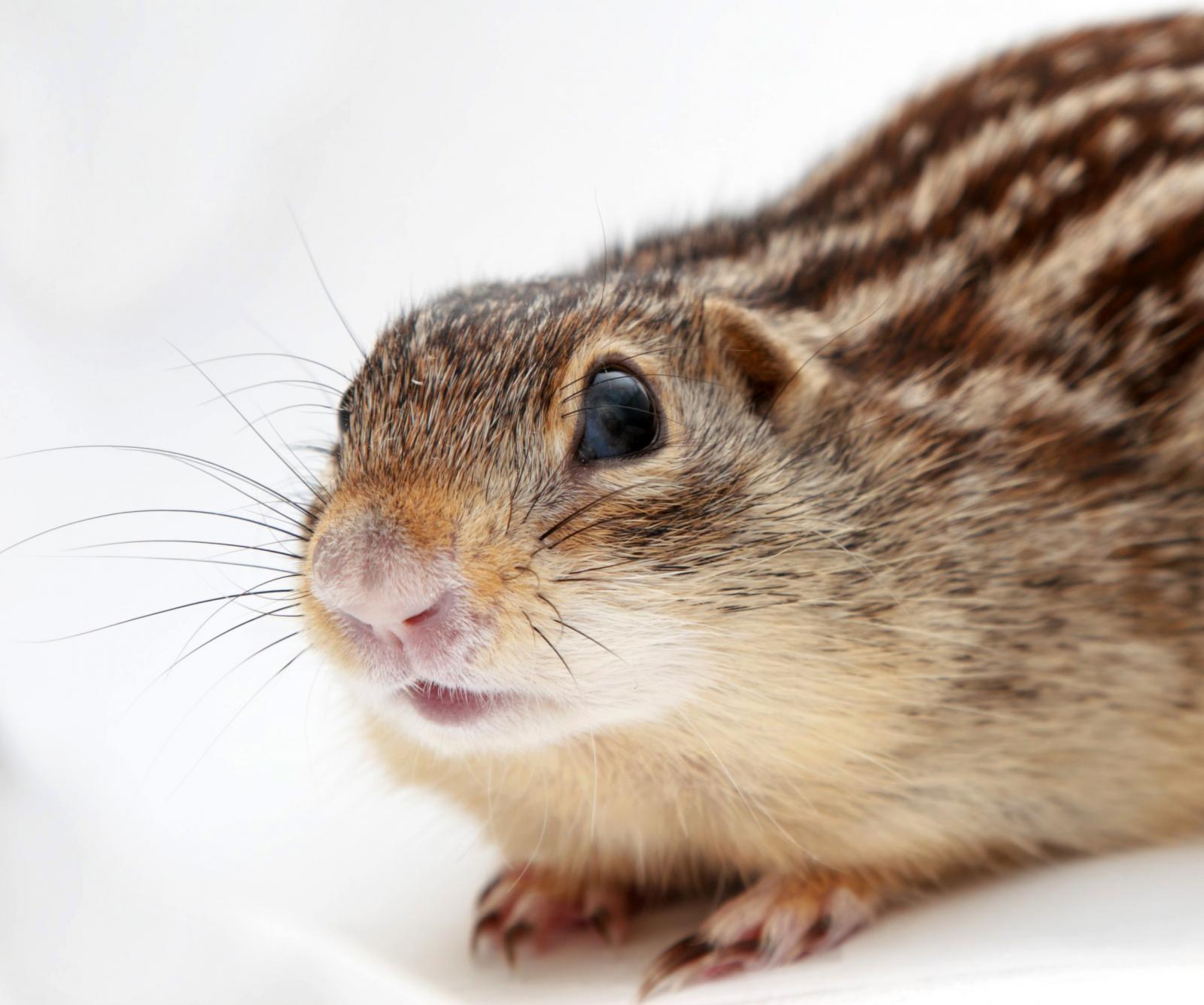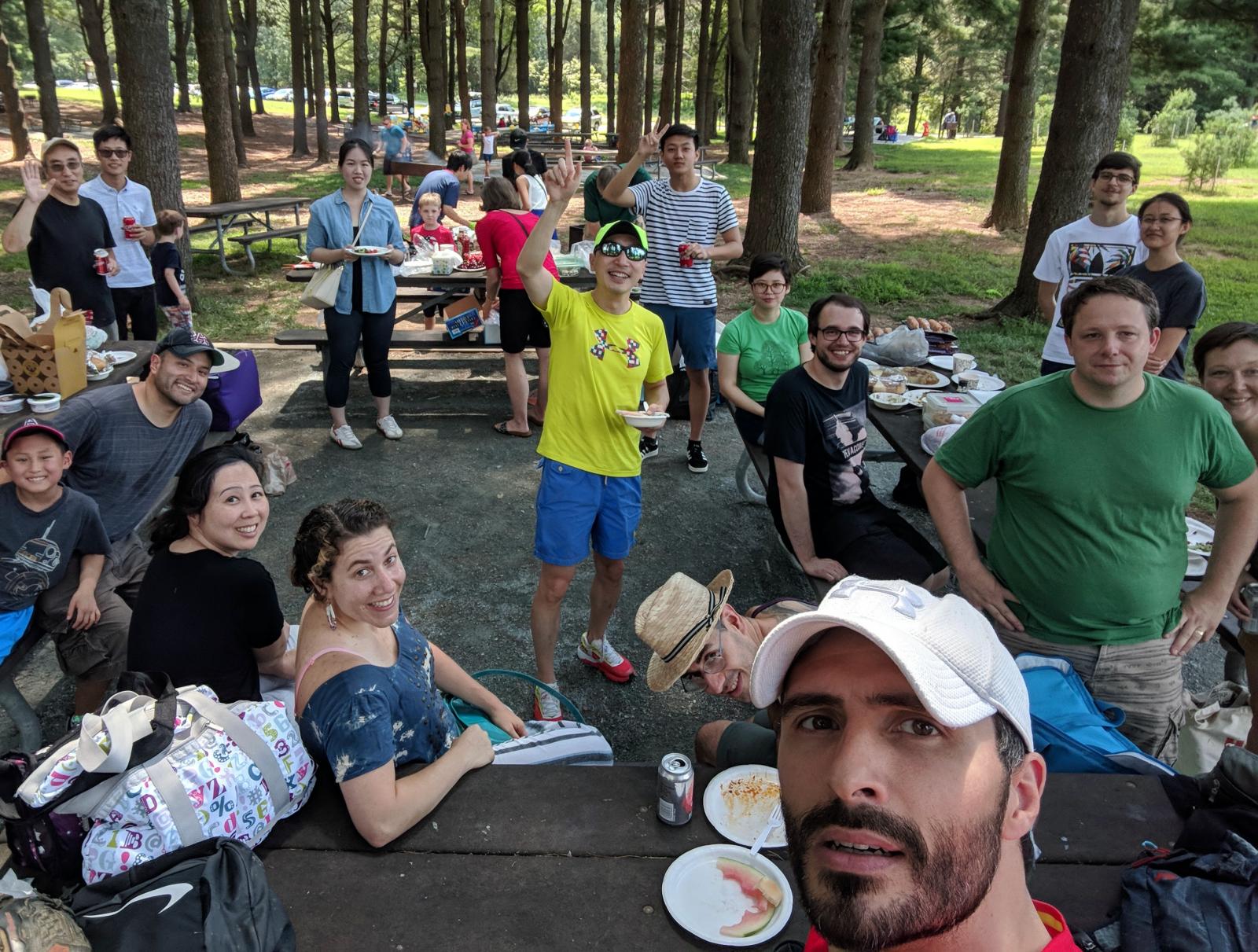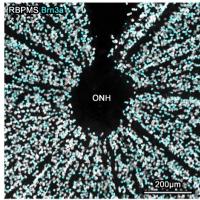
About our work
Note: This section is in the process of closing down since Dr. Li has moved to another institution.
The long-term goal of our research is to study the mammalian retina as a model for the central nervous system (CNS) -- to understand how it functions in physiological conditions, how it is formed, how it breaks down in pathological conditions, and how it can be repaired.
We have focused on two research themes: 1) Photoreceptor structure, synapse, circuits, and development, 2) Hibernation and metabolic adaptations in the retina and beyond. As the first neuron of the visual system, photoreceptors are vital for photoreception and transmission of visual signals.
We are particularly interested in cone photoreceptors, as they mediate our daylight vision with high resolution color information. Diseases affecting cone photoreceptors compromise visual functions in the central macular area of the human retina and are thus most detrimental to our vision. However, because cones are much less abundant compared to rods in most mammals, they are less well studied. We have used the ground squirrel (GS) as a model system to study cone vision, taking advantage of their unique cone-dominant retina. In particular, we have focused on short-wavelength sensitive cones (S-cones), which are not only essential for color vision, but are also an important origin of signals for biological rhythm, mood and cognitive functions, and the growth of the eye during development. We are studying critical cone synaptic structures – synaptic ribbons, the synaptic connections of S-cones, and the development of S-cones with regard to their specific connections. These works will provide knowledge of normal retinal development and function, which can also be extended to the rest of CNS. In addition, such knowledge will benefit the development of optimal therapeutic strategies for regeneration and repair in cases of retinal degenerative disease.
Many neurodegenerative diseases, including retinal diseases, are rooted in metabolic stress in neurons and/or glial cells. Using the same GS model, we aim to learn from this hibernating mammal, which possesses an amazing capability to adapt to the extreme metabolic conditions during hibernation. By exploring the mechanisms of such adaptation, we hope to discover novel therapeutic tactics for neurodegenerative diseases.

The ground squirrel (Spermophilis tridecemlineatus) is one of the rare mammals whose retina is cone-dominated and resembles the fovea of human retina. Researchers with the NEI’s Unit on Retinal Neurophysiology are using this animal model to study the cone visual system including retinal circuits for color vision. Credit: Dr. Brett Szmajda (UNSW).
Selected publications
Ball JM*, Chen S, Li W* (2022) Mitochondria in cone photoreceptors act as microlenses to enhance photon delivery and confer directional sensitivity to light. Science Advances (in press).
Nadal-Nicolás FM*, Kunze VP, Ball JM, Peng BT, Krishnan A, Zhou G, Dong L, Li W* (2020). True S-cones are concentrated in the ventral mouse retina and wired for color detection in the upper visual field. Elife 9:e56840
Ou J, Ball JM, Luan Y, Zhao T, Miyajishima J, Xu Y, Chen J, Merriman D, Xie Z, Mallon BS, Li W* (2018) iPSCs from a hibernator provide a platform for studying cold adaptation and its potential medical applications Cell 173(4):851-863
Fan JG, Jia L, Li Y, Ebrahim S, May-Simera H, Wood L, Morell RJ, Liu PH, Lei JQ, Kachar B, Belluscio L, Qian H, Li T, Li W*, Wistow GJ*, Dong LJ* (2017) Maturation arrest in early postnatal sensory receptors by deletion of the miR-183/96/182 cluster in mouse. PNAS 114(21):E4271-E4280
Mehta B, Snellman J, Chen S, Li W*, and Zenisek D* (2013) Synaptic ribbons influence the size and frequency of miniature-like evoked postsynaptic currents. Neuron 77(3):516-527
Chen S, Li W* (2012) A color-coding amacrine cell may provide a blue-Off signal in a mammalian retina. Nature Neuroscience 15(7):954-956
Li W*, Chen S, DeVries SH* (2010) A fast rod photoreceptor signaling pathway in the mammalian retina. Nature Neuroscience 13(4):414-416.
Reviews and chapters
Angueyra J and Li W (2020) Subcortical color pathways in mammals. The Senses: A Comprehensive Reference (2nd Edition) Academic Press
Li W (2020) Ground squirrel - A cool model for a bright vision. Semin Cell Dev Biol S1084-9521(19):30117
Ou J, Rosa S, Berchowitz LE, Li W (2019) Induced pluripotent stem cells as a tool for comparative physiology: lessons from the thirteen-lined ground squirrel. J Exp Biol 222
Miyagishima K, Grünert U, Li W (2014) Processing of S-cone Signals in the Inner Plexiform Layer of the mammalian retina. Visual Neuroscience 31(2):153-163

Journal covers

NEI Retinal Neurophysiology Section Staff
More information
Highlights from the NEI Retinal Neurophysiology Section
https://www.nature.com/articles/nn0410-410
https://www.nature.com/articles/nrn3288
https://science.sciencemag.org/content/360/6387/394.5
https://elifesciences.org/digests/56840/mice-see-skies-of-blue
(No longer accepting new fellows/trainees)
Retinal Neurophysiology Section key staff
| Name | Title | Phone | |
|---|---|---|---|
| Juan Angueyra, Ph.D. | Postdoctoral Fellow | juan.angueyra-aristizabal@nih.gov | 301-402-5459 |
| John Ball, Ph.D. | Staff Scientist | john.ball2@nih.gov | 301-402-1924 |
| Vincent Kunze, Ph.D. | Postdoctoral Fellow | vincent.kunze@nih.gov | 301-402-1340 |
| Wenxin MA, M.D., Ph.D. | Biologist | mawenxin@nei.nih.gov | 301-451-1943 |
| Kiyoharu Miyagishima, Ph.D. | Staff Scientist | kiyoharu.miyagishima@nih.gov | 301-435-5123 |
| Francisco Nadal-Nicolas, Ph.D. | Postdoctoral Fellow | francisco.nadal-nicolas@nih.gov | 301-402-1340 |
| Laura Patak | Postbac Fellow | laura.patak@nih.gov | 301-402-1927 |
| Fengyu Qiao, Ph.D. | Biologist | qiaof@nei.nih.gov | 301-402-2595 |
| Steve Stashef, M.D., Ph.D. | Visiting Scientist | steven.stasheff@nih.gov | 301-402-1924 |



